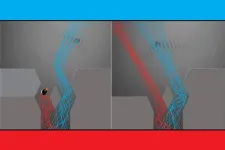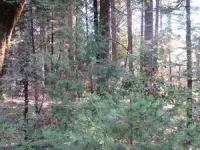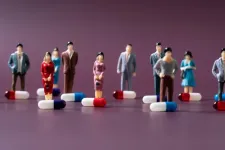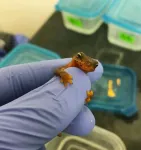In our everyday classical world, what you see is what you get. A ball is just a ball, and when lobbed through the air, its trajectory is straightforward and clear. But if that ball were shrunk to the size of an atom or smaller, its behavior would shift into a quantum, fuzzy reality. The ball would exist as not just a physical particle but also a wave of possible particle states. And this wave-particle duality can give rise to some weird and sneaky phenomena.
One of the stranger prospects comes from a thought experiment known as the “quantum bomb tester.” The experiment proposes that a quantum particle, such as a photon, could act as a sort of telekinetic bomb detector. Through its properties as both a particle and a wave, the photon could, in theory, sense the presence of a bomb without physically interacting with it.
The concept checks out mathematically and is in line with what the equations governing quantum mechanics allow. But when it comes to spelling out exactly how a particle would accomplish such a bomb-sniffing feat, physicists are stumped. The conundrum lies in a quantum particle’s inherently shifty, in-between, undefinable state. In other words, scientists just have to trust that it works.
But mathematicians at MIT are hoping to dispel some of the mystery and ultimately establish a more concrete picture of quantum mechanics. They have now shown that they can recreate an analog of the quantum bomb tester and generate the behavior that the experiment predicts. They’ve done so not in an exotic, microscopic, quantum setting, but in a seemingly mundane, classical, tabletop setup.
In a paper appearing today in Physical Review A, the team reports recreating the quantum bomb tester in an experiment with a study of bouncing droplets. The team found that the interaction of the droplet with its own waves is similar to a photon’s quantum wave-particle behavior: When dropped into a configuration similar to what is proposed in the quantum bomb test, the droplet behaves in exactly the same statistical manner that is predicted for the photon. If there were actually a bomb in the setup 50 percent of the time, the droplet, like the photon, would detect it, without physically interacting with it, 25 percent of the time.
The fact that the statistics in both experiments match up suggests that something in the droplet’s classical dynamics may be at the heart of a photon’s otherwise mysterious quantum behavior. The researchers see the study as another bridge between two realities: the observable, classical world and the fuzzier quantum realm.
“Here we have a classical system that gives the same statistics as arises in the quantum bomb test, which is considered one of the wonders of the quantum world,” says study author John Bush, professor of applied mathematics at MIT. “In fact, we find that the phenomenon is not so wonderful after all. And this is another example of quantum behavior that can be understood from a local realist perspective.”
Bush’s co-author is former MIT postdoc Valeri Frumkin.
Making waves
To some physicists, quantum mechanics leaves too much to the imagination and doesn’t say enough about the actual dynamics from which such weird phenomena supposedly arise. In 1927, in an attempt to crystallize quantum mechanics, physicist Louis de Broglie presented the pilot wave theory — a still-controversial idea that poses a particle’s quantum behavior is determined not by an intangible, statistical wave of possible states but by a physical “pilot” wave of its own making, that guides the particle through space.
The concept was mostly discounted until 2005, when physicist Yves Couder discovered that de Broglie’s quantum waves could be replicated and studied in a classical, fluid-based experiment. The setup involves a bath of fluid that is made to subtly vibrate up and down, though not quite enough to generate waves on its own. A millimeter-sized droplet of the same fluid is then dispensed over the bath, and as it bounces off the surface, the droplet resonates with the bath’s vibrations, creating what physicists know as a standing wave field that “pilots,” or pushes the droplet along. The effect is of a droplet that appears to walk along a rippled surface in patterns that turn out to be in line with de Broglie’s pilot wave theory.
For the last 13 years, Bush has worked to refine and extend Couder’s hydrodynamic pilot wave experiments and has successfully used the setup to observe droplets exhibiting emergent, quantum-like behavior, including quantum tunneling, single-particle diffraction, and surreal trajectories.
“It turns out that this hydrodynamic pilot-wave experiment exhibits many features of quantum systems which were previously thought to be impossible to understand from a classical perspective,” Bush says.
Bombs away
In their new study, he and Frumkin took on the quantum bomb tester. The thought experiment begins with a conceptual interferometer — essentially, two corridors of the same length that branch out from the same starting point, then turn and converge, forming a rhombus-like configuration as the corridors continue on, each ending in a respective detector.
According to quantum mechanics, if a photon is fired from the interferometer’s starting point, through a beamsplitter, the particle should travel down one of the two corridors with equal probability. Meanwhile, the photon’s mysterious “wave function,” or the sum of all its possible states, travels down both corridors simultaneously. The wave function interferes in such a way to ensure that the particle only appears at one detector (let’s call this D1) and never the other (D2). Hence, the photon should be detected at D1 100 percent of the time, regardless of which corridor it traveled through.
If there is a bomb in one of the two corridors, and a photon heads down this corridor, it predictably triggers the bomb and the setup is blown to bits, and no photon is detected at either detector. But if the photon travels down the corridor without the bomb, something weird happens: Its wave function, in traveling down both corridors, is cut short in one by the bomb. As it’s not quite a particle, the wave does not set off the bomb. But the wave interference is altered in such a way that the particle will be detected with equal probability at D1 and D2. Any signal at D2 therefore would mean that a photon has detected the presence of the bomb, without physically interacting with it. If the bomb is present 50 percent of the time, then this weird quantum bomb detection should occur 25 percent of the time.
In their new study, Bush and Frumkin set up an analogous experiment to see if this quantum behavior could emerge in classical droplets. Into a bath of silicon oil, they submerged a structure similar to the rhombus-like corridors in the thought experiment. They then carefully dispensed tiny oil droplets into the bath and tracked their paths. They added a structure to one side of the rhombus to mimic a bomb-like object and observed how the droplet and its wave patterns changed in response.
In the end, they found that 25 percent of the time a droplet bounced through the corridor without the “bomb,” while itspilot waves interacted with the bomb structure in a way that pushed the droplet away from the bomb. From this perspective, the droplet was able to “sense” the bomb-like object without physically coming into contact with it. While the droplet exhibited quantum-like behavior, the team could plainly see that this behavior emerged from the droplet’s waves, which physically helped to keep the droplet away from the bomb. These dynamics, the team says, may also help to explain the mysterious behavior in quantum particles.
“Not only are the statistics the same, but we also know the dynamics, which was a mystery,” Frumkin says. “And the inference is that an analogous dynamics may underly the quantum behavior.”
"This system is the only example we know which is not quantum but shares some strong wave-particles properties,“ says theoretical physicist Matthieu Labousse, at CNRS, ESPCI Paris PSL, who was not involved in the study. „It is very surprising that many examples thought to be peculiar to the quantum world can be reproduced by such a classical system. It enables to understand the barrier between what it is specific to a quantum system and what is not. The latest results of the group at MIT pushes the barrier very far."
This research is supported, in part, by the National Science Foundation.
###
Written by Jennifer Chu, MIT News
END




